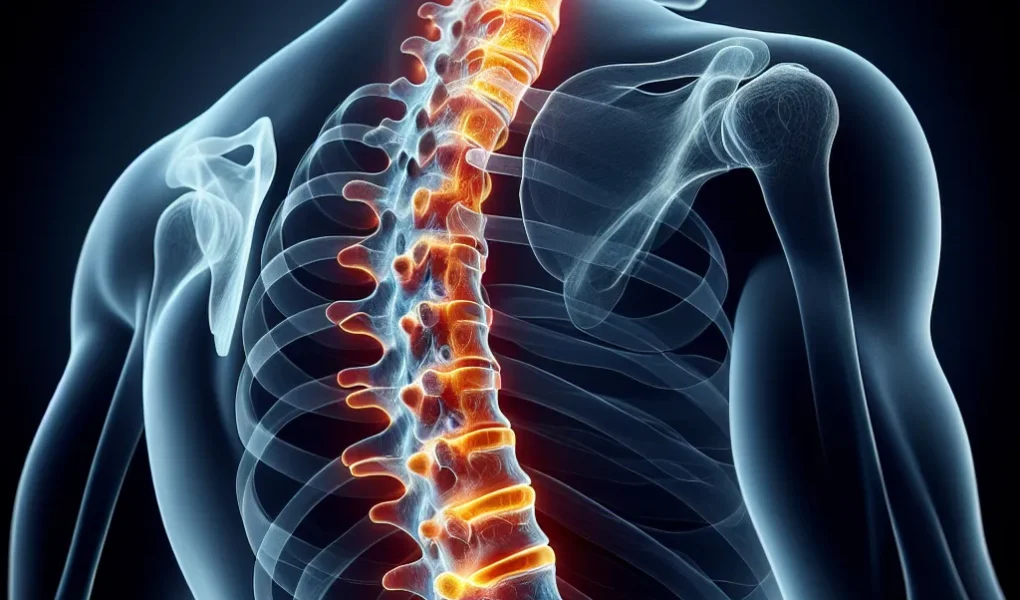What Causes Spinal Discomfort?
Understanding spinal discomfort is crucial for managing and alleviating the symptoms that come with it. There are several causes of spinal discomfort, ranging from common issues to more severe conditions. Poor posture, muscle strain, and injury are among the leading culprits behind spinal discomfort. Sedentary lifestyles and lack of exercise can also contribute to weakened muscles, leading to discomfort in the spinal area.
Furthermore, underlying medical conditions such as arthritis, osteoporosis, and herniated discs can result in significant spinal discomfort. These conditions may lead to inflammation, nerve compression, and structural changes in the spine, all of which can cause varying levels of discomfort.
In addition to these factors, psychological elements such as stress and anxiety can exacerbate spinal discomfort by causing muscle tension and overall physical discomfort.
Understanding the root cause of spinal discomfort is essential for determining the most effective treatment options. From physical therapy and medication to lifestyle adjustments and, in severe cases, surgery, the approach to managing spinal discomfort depends largely on the specific cause and individual circumstances.
By comprehensively addressing the causes of spinal discomfort and exploring tailored treatment options, individuals can take proactive steps in managing and alleviating this pervasive issue.
Common Conditions Affecting the Spine
Understanding spinal discomfort is crucial for those who suffer from common conditions affecting the spine. One of the most prevalent spinal issues is disc degeneration, which occurs as the discs between the vertebrae deteriorate over time, leading to pain and reduced mobility. Another common condition is spinal stenosis, where the spinal canal narrows and puts pressure on the spinal cord and nerves, resulting in pain, numbness, and weakness. Additionally, herniated discs, which occur when the inner gel-like core of a disc leaks out and puts pressure on nearby nerves, can cause significant discomfort.
Fortunately, there are various treatment options available for these common spinal conditions. Non-surgical interventions such as physical therapy, medication, and epidural injections can often alleviate discomfort and improve mobility. In more severe cases, surgical options like spinal fusion or disc replacement may be considered to address the underlying issues and provide long-term relief.
By understanding the causes and treatment options for these common spinal conditions, individuals can make informed decisions about managing their spinal discomfort and improving their quality of life.
Treatment Options for Spinal Pain
When it comes to spinal discomfort, exploring the various treatment options is crucial for finding relief and improving overall quality of life. There are several approaches to managing spinal pain, ranging from non-invasive methods to surgical interventions, all aimed at addressing the root cause of the discomfort.
Non-surgical options include physical therapy, which focuses on strengthening the muscles supporting the spine and improving flexibility, ultimately reducing pain and preventing reoccurrence. In addition, chiropractic care utilizes manual adjustments to restore proper alignment of the spine, offering relief for many individuals suffering from spinal discomfort.
For those experiencing chronic or severe spinal pain, more invasive treatments such as steroid injections or nerve blocks may be recommended to reduce inflammation and alleviate symptoms. In cases where conservative treatments have been unsuccessful, surgical interventions like discectomy or spinal fusion may be considered to address underlying issues such as herniated discs or spinal instability.
Furthermore, advancements in medical technology have led to innovative treatments such as minimally invasive spine surgery, providing a less disruptive option for those requiring surgical intervention. This approach typically results in reduced recovery time and minimized trauma to surrounding tissues.
It’s important to note that the most effective treatment option for spinal discomfort varies from person to person, and individuals are encouraged to consult with medical professionals to determine the most suitable approach based on their specific condition and medical history.
By understanding the diverse treatment options available, individuals can take proactive steps towards effectively managing spinal discomfort and improving their overall well-being.
Prevention and Management Techniques
Spinal discomfort can be a debilitating issue for many individuals, impacting their daily lives and overall well-being. Understanding the causes of spinal discomfort is crucial in implementing effective prevention and management techniques. One of the primary causes of spinal discomfort is poor posture, which places excessive strain on the spine. Prolonged sitting, especially in positions that place the spine in unnatural curves, can contribute to discomfort. Additionally, lack of regular exercise and muscle strength can lead to spinal issues. Other factors such as obesity and improper lifting techniques also play a role in spinal discomfort.
Prevention of spinal discomfort involves maintaining a healthy lifestyle, with regular exercise to keep the muscles supporting the spine strong. Proper posture should be emphasized, especially when sitting for extended periods. Ergonomic chairs and workstations can also help in maintaining good posture. Avoiding prolonged sitting and taking frequent breaks to stretch and move around can alleviate strain on the spine. When it comes to management techniques, physical therapy and chiropractic care can be beneficial in addressing spinal discomfort. These treatments focus on improving spinal alignment, strengthening muscles, and alleviating pain through targeted exercises and adjustments. In more severe cases, surgical intervention may be necessary to correct underlying issues contributing to spinal discomfort.
Overall, understanding the causes of spinal discomfort is essential in implementing effective prevention and management techniques. By prioritizing good posture, regular exercise, and seeking professional care when needed, individuals can take proactive steps to alleviate spinal discomfort and improve their quality of life.
Seeking Professional Help for Spinal Discomfort
Seeking professional help for spinal discomfort is crucial for effectively managing and treating the underlying causes. When experiencing spinal discomfort, it is essential to seek the expertise of healthcare professionals such as orthopedic doctors, physical therapists, and chiropractors. These professionals can conduct a thorough evaluation to identify the specific cause of the discomfort, whether it be related to spinal misalignment, muscle strain, injury, or other underlying conditions.
Orthopedic doctors specialize in diagnosing and treating musculoskeletal issues, including those related to the spine. They may utilize imaging tests such as X-rays, MRI, or CT scans to accurately diagnose the problem and recommend appropriate treatment. Physical therapists can develop customized exercise programs and provide hands-on techniques to improve spinal flexibility, strengthen supporting muscles, and alleviate discomfort.
Chiropractors focus on spinal alignment and the nervous system, employing manual adjustments to correct misalignments (subluxations) in the spine. These adjustments can reduce pressure on the spinal nerves, leading to pain relief and improved function. Additionally, seeking professional help for spinal discomfort may involve collaborating with pain management specialists who can provide targeted interventions such as epidural injections or nerve blocks to alleviate severe discomfort.
It is essential to prioritize the assessment and treatment of spinal discomfort under the guidance of healthcare professionals to prevent potential complications and effectively address the root cause of the issue. By seeking timely professional help, individuals can access comprehensive care and tailored treatment plans to promote spinal health and overall well-being.
Living with Chronic Spinal Pain
Living with chronic spinal pain can be a challenging and debilitating experience for many individuals. The daily struggle of managing discomfort, limited mobility, and potential impact on overall quality of life can be overwhelming. Chronic spinal pain can stem from various sources, including degenerative disc disease, herniated discs, spinal stenosis, or even underlying medical conditions like arthritis or fibromyalgia.
For those living with chronic spinal discomfort, the impact extends beyond physical symptoms. It can affect mental and emotional well-being, leading to increased stress, anxiety, and depression. Day-to-day activities that others may take for granted, such as sitting at a desk, standing for extended periods, or engaging in physical activities, can become daunting tasks for individuals dealing with persistent spinal pain.
Managing chronic spinal pain often requires a multi-faceted approach, including pain medications, physical therapy, exercise, and lifestyle modifications. Additionally, alternative treatments like acupuncture, chiropractic care, and mindfulness practices have shown promise in alleviating spinal discomfort for some individuals.
When living with chronic spinal pain, seeking support from healthcare professionals, joining support groups, and engaging in self-care strategies are essential for maintaining a positive outlook and finding effective pain management techniques. It’s important for individuals with chronic spinal discomfort to explore various treatment options, stay proactive in their care, and advocate for their needs to improve their overall well-being.
Understanding and addressing the challenges of living with chronic spinal pain is crucial for individuals and their support networks to navigate the complexities of this condition and work towards a better quality of life.


